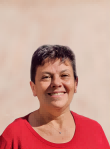Published
2023-11-03
Issue
Section
Research Articles
License
The journal adopts the Attribution-NonCommercial 4.0 International (CC BY-NC 4.0), which means that anyone can reuse and redistribute the materials for non-commercial purposes as long as you follow the license terms and the original source is properly cited.
Author(s) shall retain the copyright of their work and grant the Journal/Publisher rights for the first publication with the work concurrently licensed since 2023 Vol.8 No.2.
Under this license, author(s) will allow third parties to download, reuse, reprint, modify, distribute and/or copy the content under the condition that the authors are given credit. No permission is required from the authors or the publisher.
This broad license intends to facilitate free access, as well as the unrestricted use of original works of all types. This ensures that the published work is freely and openly available in perpetuity.
By providing open access, the following benefits are brought about:
- Higher Visibility, Availability and Citations-free and unlimited accessibility of the publication over the internet without any restrictions increases citation of the article.
- Ease of search-publications are easily searchable in search engines and indexing databases.
- Rapid Publication – accepted papers are immediately published online.
- Available for free download immediately after publication at https://esp.as-pub.com/index.php/ESP

Copyright Statement
1.The authors certify that the submitted manuscripts are original works, do not infringe the rights of others, are free from academic misconduct and confidentiality issues, and that there are no disputes over the authorship scheme of the collaborative articles. In case of infringement, academic misconduct and confidentiality issues, as well as disputes over the authorship scheme, all responsibilities will be borne by the authors.
2. The author agrees to grant the Editorial Office of Environment and Social Psychology a licence to use the reproduction right, distribution right, information network dissemination right, performance right, translation right, and compilation right of the submitted manuscript, including the work as a whole, as well as the diagrams, tables, abstracts, and any other parts that can be extracted from the work and used in accordance with the characteristics of the journal. The Editorial Board of Environment and Social Psychology has the right to use and sub-licence the above mentioned works for wide dissemination in print, electronic and online versions, and, in accordance with the characteristics of the periodical, for the period of legal protection of the property right of the copyright in the work, and for the territorial scope of the work throughout the world.
3. The authors are entitled to the copyright of their works under the relevant laws of Singapore, provided that they do not exercise their rights in a manner prejudicial to the interests of the Journal.
About Licence
Environment and Social Psychology is an open access journal and all published work is available under the Creative Commons Licence, Authors shall retain copyright of their work and grant the journal/publisher the right of first publication, and their work shall be licensed under the Attribution-NonCommercial 4.0 International (CC BY-NC 4.0).
Under this licence, the author grants permission to third parties to download, reuse, reprint, modify, distribute and/or copy the content with attribution to the author. No permission from the author or publisher is required.
This broad licence is intended to facilitate free access to and unrestricted use of original works of all kinds. This ensures that published works remain free and accessible in perpetuity. Submitted manuscripts, once accepted, are immediately available to the public and permanently accessible free of charge on the journal’s official website (https://esp.as-pub.com/index.php/ESP). Allowing users to read, download, copy, print, search for or link to the full text of the article, or use it for other legal purposes. However, the use of the work must retain the author's signature, be limited to non-commercial purposes, and not be interpretative.
Click to download <Agreement on the Licence for the Use of Copyright on Environmental and Social Psychology>.
How to Cite
Levels of physical activity in childhood. Analysis of Family influence, gender, type of school and place of residence
Oliver Ramos-Álvarez
Departamento de Educación, Área de Educación Física y Deportiva, Universidad de Cantabria; Health Economics and Health Services Management Research Group, IDIVAL Valdecilla
Ana Vieites Lois
Education Faculty. University of A Coruña, Elviña University Campus
Víctor Arufe-Giráldez
Education Faculty. University of A Coruña, Elviña University Campus; Research Unit of School Sports, Physical Education and Psychomotricity (UNIDEF), Specific Didactics Department, Research and Diagnostic Methods in Education, Education Faculty, University of A Coruña, Elviña University Campus
DOI: https://doi.org/10.54517/esp.v8i3.1815
Keywords: childhood, physical activity, health, family, sedentary lifestyle
Abstract
This paper pretends to investigate the effectiveness of distance education during the COVID-19 pandemic time. Its objective was to analyze variables that impacted the results of emergency distance education, the challenges that arise for teacher training and comprehensive and inclusive education during and after pandemic periods. It corresponds to a documentary investigation, uses qualitative content analysis, and is framed in a stage of initial results on peer-reviewed academic articles from the Web of Science and websites of institutions relevant to the topic studied. The total sample was 70 articles. The results identify variables mostly studied in the scientific literature that affected distance learning, related to socio-emotional, motivational, self-regulation and executive skills of the students, along with those coming from particular family and social contexts and the organization of schools. It is expected that the conclusions will contribute to educational policy decisions on teacher training and intersectoral actions to face future emergencies that involve school closures and constitute a set of evidence of the main barriers and facilitators of educational work in a period of health emergency available to the educational community, useful for the design of improvements in educational quality for the diversity of students in different scenarios.
References
[1]. Ramos Álvarez O, Arufe Giráldez V, Cantarero Prieto D, Ibáñez García A. Changes in physical fitness, dietary habits and family habits for spanish children during SARS-CoV-2 lockdown. International Journal of Environmental Research and Public Health 2021; 18(24): 13293. doi: 10.3390/ijerph182413293
[2]. Rosa Guillamón A, Rodríguez García PL, García Cantó E, Pérez Soto JJ. Physical fitness levels of schoolchildren aged 8 to 11 years in relation to gender and body status (Spanish). Ágora para la EF y el deporte 2015; 17(3): 237–250.
[3]. Rosa Guillamón A, García Cantó E, Carrillo PJ. Perception of health, physical activity and physical fitness in schoolchildren (Spanish). Cuadernos de Psicología del Deporte 2018; 18(3): 179–189.
[4]. Kim Y, Lee H. Association of health risk perception and physical activity among adolescents (Spanish). Revista de psicología del deporte 2017; 26(3): 45–50.
[5]. Soler Lanagrán A, Castañeda Vázquez C. Sedentary lifestyle and health risks in children: A systematic review (Spanish). Journal of Sport and Health Research 2017; 9(2): 187–198. doi: 10.1186/s12966-014-0096-x
[6]. Ochoa GD, González Santana SR, Favela JAA, Donlucas GM. Poor eating habits and lack of physical activity main triggers of overweight and obesity in school children (Spanish). CULCyT: Cultura Científica y Tecnológica 2014; 11(54): 81–90.
[7]. Organización Mundial de la Salud. Physical activity (Spanish). Available online: https://www.who.int/es/news-room/fact-sheets/detail/physical-activity#:~:text=Se%20podr%C3%ADan%20evitar%20hasta%205%20millones%20de%20fallecimientos,que%20alcanzan%20un%20nivel%20suficiente%20de%20actividad%20f%C3%ADsica (accessed on 8 July 2022).
[8]. Organización de las Naciones Unidas. Recommends that children should not use screens until they are two years old (Spanish). Available online: https://news.un.org/es/story/2019/04/1454801 (accessed on 7 October 2022).
[9]. Organización de las Naciones Unidas. 80% of adolescents do not do enough physical activity (Spanish). Available online: https://news.un.org/es/story/2019/11/1465711 (accessed on 1 May 2023).
[10]. Organización de las Naciones Unidas. 17 goals to transform our world (Spanish). Available online: https://www.un.org/sustainabledevelopment/es/ (accessed on 2 September 2022).
[11]. Organización de las Naciones Unidas. Health and wellness: Why it is important (Spanish). Available online: https://www.un.org/sustainabledevelopment/es/wp-content/uploads/sites/3/2016/10/3_Spanish_Why_it_Matters.pdf (accessed on 2 September 2022).
[12]. Organización de las Naciones Unidas. Quality education: Why it is important (Spanish). Available online: https://www.un.org/sustainabledevelopment/es/wp-content/uploads/sites/3/2016/10/4_Spanish_Why_it_Matters.pdf (accessed on 2 September 2022).
[13]. Organización de las Naciones Unidas. Sustainable cities: Why they matter (Spanish). Available online: https://www.un.org/sustainabledevelopment/es/wp-content/uploads/sites/3/2016/10/11_Spanish_Why_it_Matters.pdf (accessed on 2 October 2022).
[14]. Gasol Foundation. PASOS 2019 Study: Main Results of the PASOS 2019 Study on Physical Activity, Lifestyles and Obesity in the Spanish Population Aged 8–16 Years (Spanish). Barcelona: Gasol Foundation; 2019.
[15]. Fundación para la Investigación Nutricional. Report 2016: Physical Activity in Children and Adolescents in Spain (Spanish). Fundación para la Investigación Nutricional; 2017.
[16]. Dwyer GM, Higgs J, Hardy LL, Baur LA. What do parents and preschool staff tell us about young children’s physical activity: A qualitative study. International Journal of Behavioral Nutrition and Physical Activity 2008; 5(1): 66. doi: 10.1186/1479-5868-5-66
[17]. Jurado-Castro JM, Llorente-Cantarero FJ, Gil-Campos M. Evaluation of physical activity in children (Spanish). Acta Pediátrica Española 2019; 77(5–6): 94–99.
[18]. Subdirección General de Estadística y Estudios del Ministerio de Educación y Formación Profesional. The figures of education in Spain. Course 2019–2020 (Spanish). Available online: https://www.educacionyfp.gob.es/servicios-al-ciudadano/estadisticas/indicadores/cifras-educacion-espana/2019-2020.html (accessed on 1 May 2023).
[19]. Sañudo LE. Ethics in educational research (Spanish). Hallazgos 2006; 3(6): 83–98. doi: 10.15332/s1794-3841.2006.0006.05
[20]. Vaquero Solís M, Mirabel M, Sánchez Miguel PA, Iglesias Gallego D. Physical activity of parents and their adolescents kids: A cross-sectional study (Spanish). Retos 2020; (37): 505–508. doi: 10.47197/retos.v37i37.71245
[21]. Chiva-Bartoll O, Estevan I. Gender, family environment and leisure physical activity as associated factors with the motor coordination in childhood. A pilot study (Spanish). Revista Internacional de Ciencias del Deporte 2019; 15(56): 154–170. doi: 10.5232/ricyde2019.05603
[22]. Salas C, Petermann-Rocha F, Celis-Morales C, Martínez-López EJ. Parental support for physical activity in schoolchildren and its influence on nutritional status and fitness (Spanish). Revista Chilena de Pediatría 2018; 89(6): 732–740. doi: 10.4067/s0370-41062018005000906
[23]. Latorre PA, Gasco F, García M, et al. Analysis of the influence of the parents in the sports promotion of the children (Spanish). Journal of Sport and Health Research 2009; 1(1): 12–25.
[24]. Ortiz H, Cuadrado J, Belmonte S, et al. Hábitos alimentarios, dieta y actividad física en la población infantil de 4 años de la Comunidad de Madrid. Estudio ELOIN. Resultados del Estudio Longitudinal de Obesidad Infantil, (ELOIN). Eating habits, diet and physical activity of 4-year-old children in the community of Madrid.(ELOIN) 4-year-olds. The Errolin Study2012–2013. Boletín Epidemiológico de la Comunidad de Madrid 2015, 2 (21): 5–31.
[25]. Delgado-Lobete L, Montes-Montes R. Relationship between psychomotor development and extracurricular sport practice among preschoolers (Spanish). Sportis 2017; 3(1): 83–99. doi: 10.17979/sportis.2017.3.1.1770
[26]. Roman Viñas B, Serra Majem L, Ribas Barba L, et al. Leisure time physical activity in Spanish children and young people. The enKid study (1998–2000) (Spanish). Apunts. Medicina de l'Esport 2006; 41(151): 86–94.
[27]. Zapatero Ayuso JA, Ramírez Rico E, Rocu Gómez P, Navajas Seco R. Guidance for changing schoolyards as drivers of gender equality through physical activity (Spanish). Ágora para la Educación Física y el Deporte 2021; 23: 241–264. doi: 10.24197/aefd.0.2021.241-264
[28]. Salort-Calfullán DD, Urrutia-Martínez GG, Lavados-Romo PP, Martínez-Huenchullán SS. Physical function of four-year-old children with urban and rural residences (Spanish). Revista Ciencias de la Salud 2016; 14(3): 399–409. doi: 10.12804/revsalud14.03.2016.07
[29]. Pons Rodríguez R, Arufe Giráldez V. Descriptive analysis of psychomotor sessions and facilities in pre-school (Spanish). Sportis 2015; 2(1): 125–46. doi: 10.17979/sportis.2016.2.1.1445
[30]. Arufe-Giráldez V, Viña-Gesto J, Ramos-Álvarez O. Qualitative analysis of the opinion of a sample of Early Childhood Education teachers on the psychomotricity class (Spanish). EDUCA International Journal 2023; 3(2): 116–145. doi: 10.55040/educa.v3i2.6







